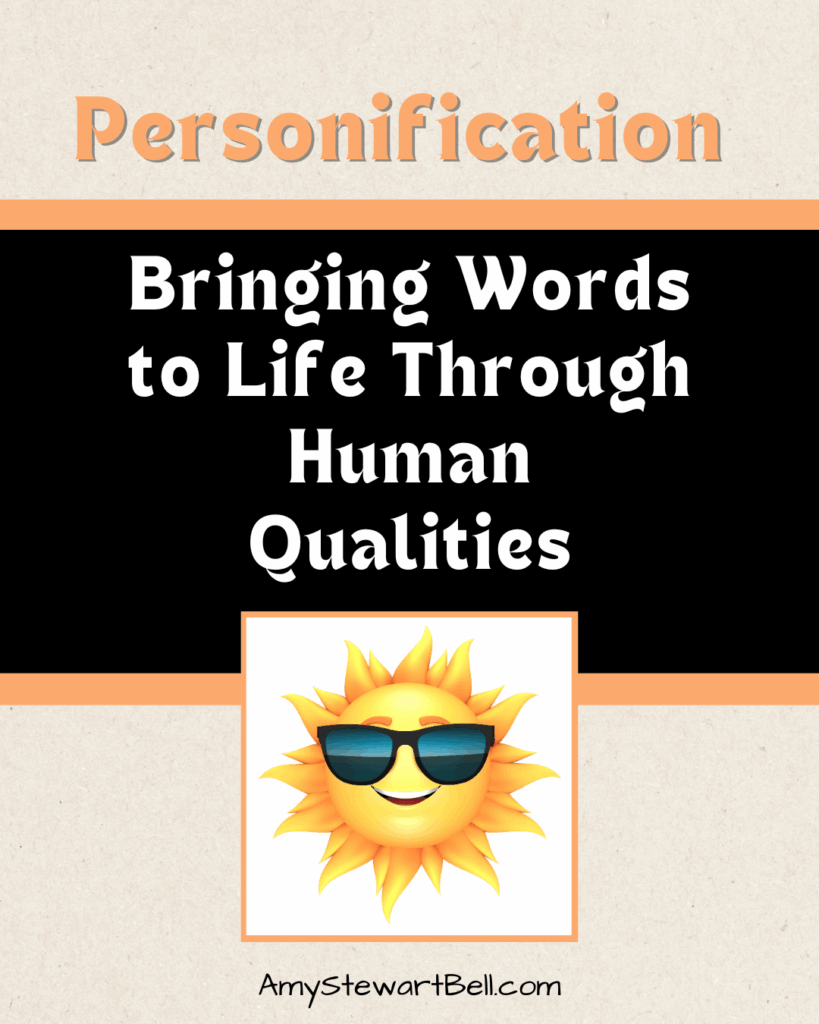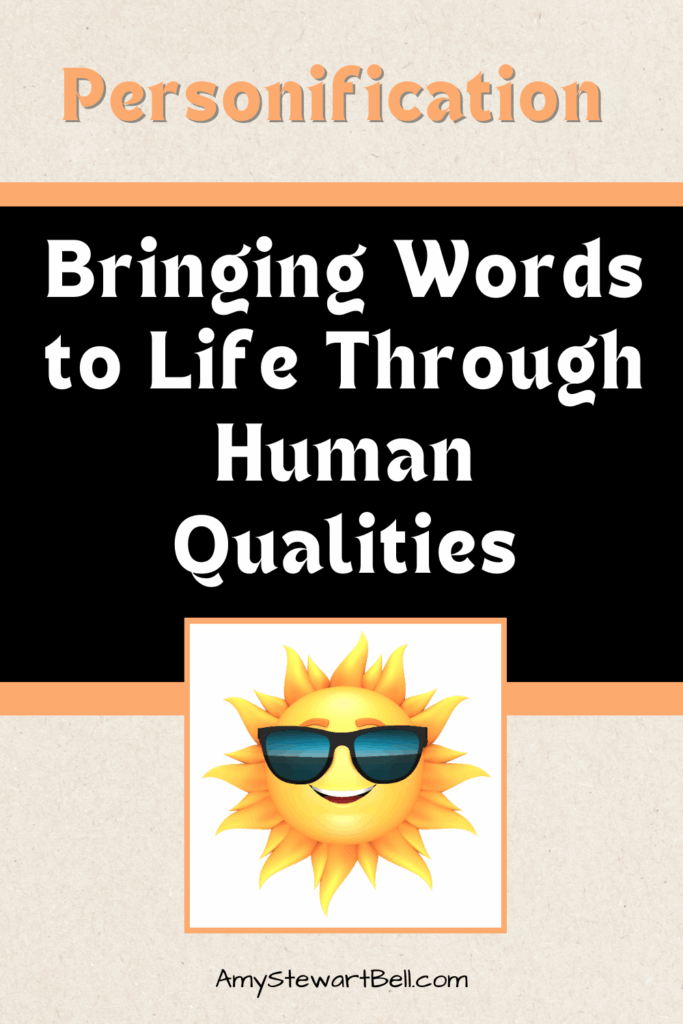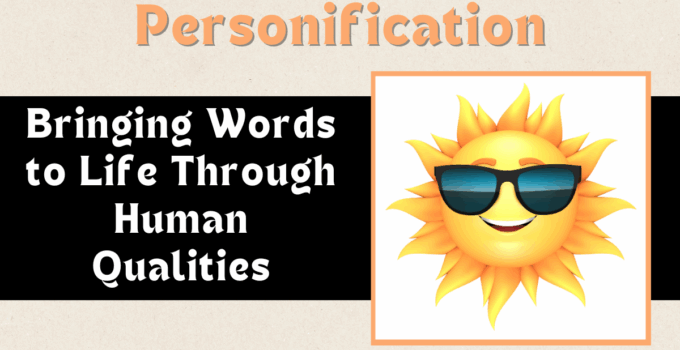Personification helps writers turn abstract ideas and inanimate objects into characters with emotion, action, and voice. It’s a powerful way to create imagery, mood, and emotional connection. Let’s explore what personification is, how it works, and how to use it effectively in your writing.
💡 What Is Personification?
Personification is a figure of speech in which non-human things are given human qualities, characteristics, or actions. These can include emotions, intentions, gestures, or even speech.
It’s not just poetic—it’s a way to create vivid imagery and make your writing more relatable and engaging.
🎯 Why Use Personification?
Writers use personification to:
- 🌈 Create vivid imagery that brings scenes to life
- 💓 Evoke emotion and empathy in readers
- 🌪️ Set tone or mood in a story or poem
- 🧠 Make abstract ideas easier to understand (like death, love, or fear)
🔍 Examples of Personification in Everyday Language
- “The sun smiled down on us.” ☀️
- “Time marches on.” ⏳
- “The thunder grumbled in the distance.” ⚡
- “The flowers begged for water.” 🌸
- “My phone hates me today.” 📱
These expressions give human traits (smiling, marching, grumbling, begging, hating) to non-human things, making them feel animated and emotional.
📚 Personification in Literature
🖋️ William Wordsworth – “I Wandered Lonely as a Cloud”
“Ten thousand saw I at a glance,
Tossing their heads in sprightly dance.”
Wordsworth describes daffodils as if they were joyful dancers, adding liveliness to the scene.
🖋️ Emily Dickinson – “Because I could not stop for Death”
“Because I could not stop for Death –
He kindly stopped for me.”
Dickinson personifies Death as a polite gentleman, giving form to a complex concept and reshaping our emotional response to it.
🖋️ George Orwell – Animal Farm
Talking animals represent people and political ideologies.
Though technically anthropomorphism, it’s also an extended personification that gives human behavior and power dynamics to non-human characters.
✍️ How to Use Personification in Your Writing
- 🔍 Focus on senses and emotions – Give the object a relatable human reaction or behavior.
- 🌫️ Match tone and mood – A storm might “howl” in a horror scene, but “hum” in a peaceful one.
- 🛠️ Don’t overdo it – Too much personification can overwhelm the story or sound melodramatic.
- 💬 Use sparingly and meaningfully – Choose moments where it enhances clarity or emotion.
🎨 Personification vs. Other Devices
- Metaphor compares two unlike things directly (“love is a battlefield”)
- Simile uses “like” or “as” to compare (“as brave as a lion”)
- Personification gives life to non-human things (“the wind howled”)
They all create imagery—but personification uniquely gives personality to the inanimate.
🧵 Final Thoughts
Personification is the storyteller’s magic trick—giving life, voice, and feeling to the world around us. Whether you’re describing a landscape, an emotion, or an idea, personification helps your reader feel it, not just see it.
So next time the moon seems to follow you home or your pen refuses to cooperate—don’t just observe it. Let it speak.
Love learning the craft of vivid, emotional writing?
Subscribe to the blog for more tips, examples, and creative tools to make your stories come alive. 🖋️🌍💬
If you enjoy learning more about writing, be sure to join our community! We will be adding a deep dive on each of the literary devices which are so important in writing and in understanding the nuances in literature.
LET’S CONNECT!
There are many ways to connect with Amy Stewart Bell. We would love to know what you think and any of the topics we offer. We welcome your comments and want to interact with you!
If you haven’t yet, grab your copies of Once Captured, Uncharted Captivity, and The Captive Mind.
You can also connect in other areas. Join us on Instagram @AmyWritesAll, on X @AmyWritesAll, and on Facebook @AmyWritesAll.
Be sure to join our community as well; you will get even more inside info!







